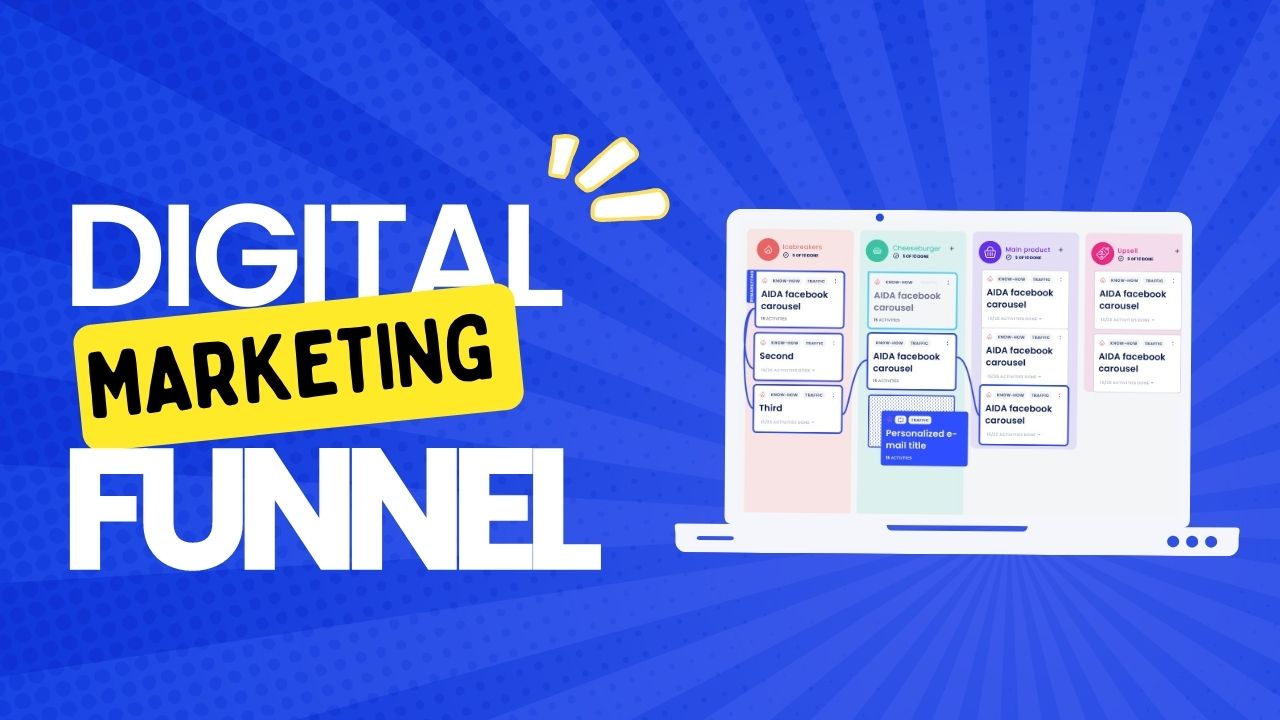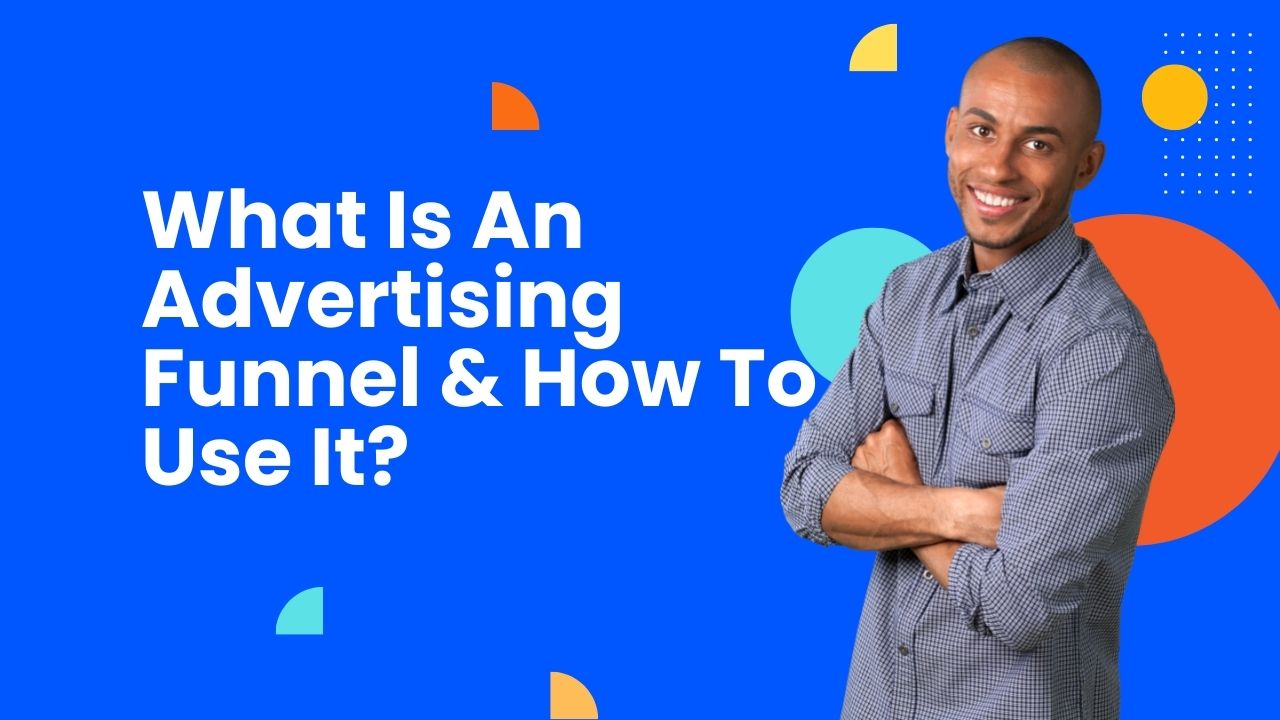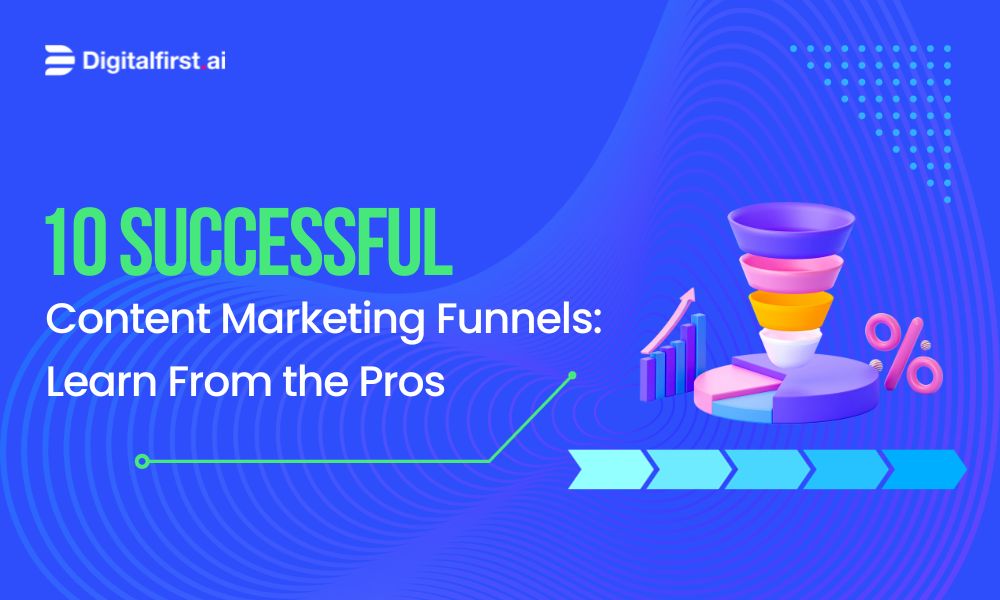Digital Marketing Funnel: From Prospect to Purchase [7 Proven Steps]
Master the digital marketing funnel: Craft a winning funnel. Discover types, stages, & 7 steps to build yours.
Sonu kalwar
Share:
Ever click on an ad, then get emails, and finally buy something cool?
Remember that journey? That's a digital marketing funnel in action! It's like a cool path guiding people to discover your awesome stuff. This blog helps you build your own funnel and attract excited customers, just like magic!
Get ready to learn about:
Different funnels for different businesses (like selling toys or software)
5 stages people go through before buying
7 magic steps to build your own winning funnel
Modern tools to make it super easy
Are you ready to become a funnel master? Let's dive in!
Try Digital First AI's Plug & Play AI-Powered Marketing Workflows Builder

No credit card needed. Instant access. Try now for free.
Understanding the Digital Marketing Funnel
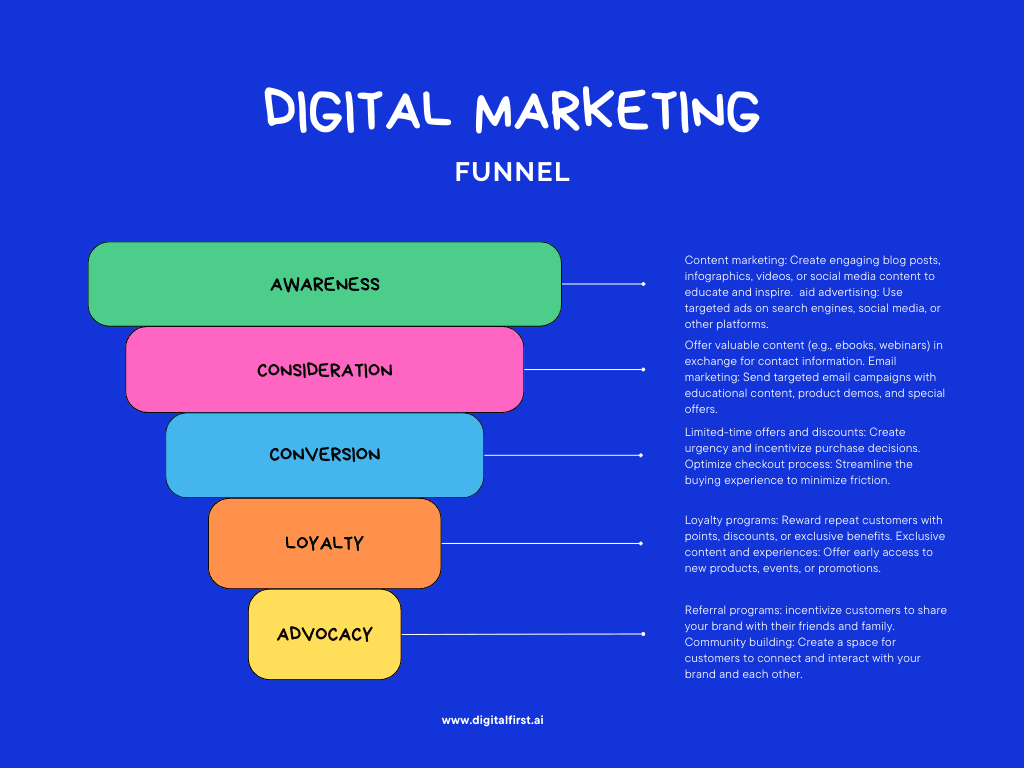
The digital marketing funnel is a road map guiding potential customers from first hearing about your brand to making a purchase. Think of it like a journey where each stage is a pit stop, getting them closer to becoming loyal customers.
At the top, we have awareness.
It’s where you grab attention with ads, social posts, or content. This is the "hello" phase, where you introduce yourself and spark interest.
Moving down, in the engagement phase, you're shaking hands with your potential customers.
Engaging content or interactive platforms help you connect and plant the seeds of a relationship.
In the consideration stage, your audience is thinking, comparing, and contemplating choices.
Your job? To show how your product stands out with demos, testimonials, or free trials.
We reach purchase when you've convinced your audience to take out their wallets.
Clear calls-to-action and easy checkouts are key here.
After purchase, you're not done yet! Adoption ensures your customers understand and enjoy their purchase, often through tutorials or customer support.
Finally, build loyalty with rewards or engagement to make them come back for more. Remember, a happy customer is the best marketer.
Let’s use Nike as a short example.
Top of the funnel (ToFu), Nike grabs attention at the top, sparking interest in getting active and subtly suggesting they be the gear of choice. They're not pushing sales yet, just planting the seed of possibility
Mid-funnel (MoFu), Nike uses its Nike Run Club app to engage users with running challenges and personalized coaching.
It's like having a digital coach spurring you on.
Then, in the bottom-funnel (BoFu), they offer exclusive shoes and discounts to app members, turning your sweat into sweet deals!
By understanding the digital marketing funnel, you can guide your customers smoothly from just looking around to can't-wait-to-buy, and finally, to let's-buy-again.
Explore Deeper
Traditional vs. Digital Approaches
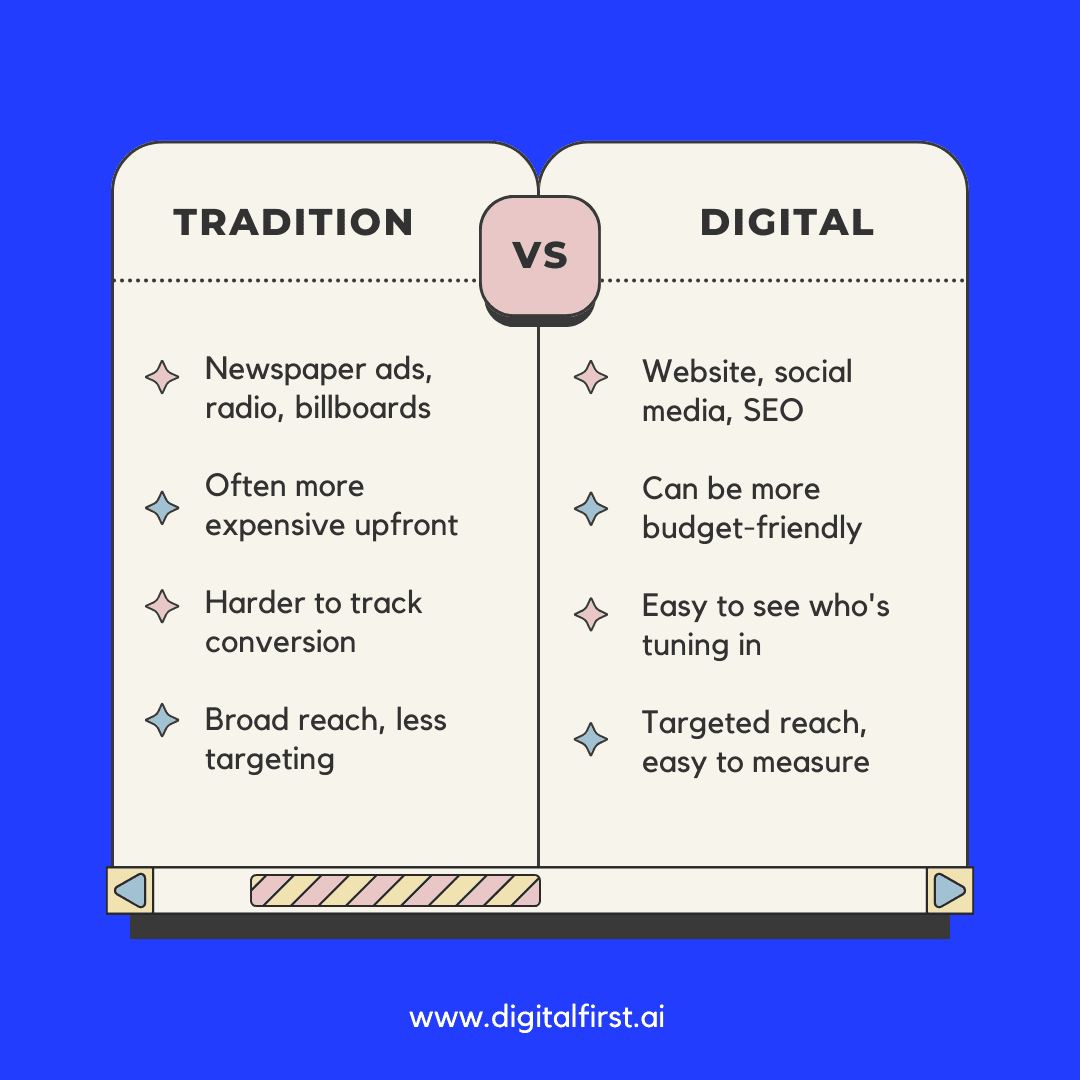
Think "old school" for traditional marketing: Think TV commercials, radio ads, billboards, and flyers. It's like shouting your message to a whole crowd, hoping someone hears you.
It can be great for reaching a lot of people, but it's hard to target just the folks who might actually care. Plus, measuring its success can be tricky.
Digital marketing is all about the internet: Landing pages, social media, search engines, and online ads are your playground. It's like whispering directly to the people who are already interested in what you offer.
You can target specific groups, track exactly who sees your message, and even chat with them directly.
Pretty cool, right?
Let’s take an example of an Italian restaurant. The way you market a new restaurant has changed a bunch.
Traditional marketing feels a lot like shouting from a rooftop and hoping the right folks hear you.
You might put ads in the newspaper or on the radio, but you can't really know who's listening, right?
Or you might hand out flyers, yet can't tell who’s gonna pop by for a slice of pizza.
Digital marketing, though, is like having a nifty gadget that whispers your ad into just the ears of those who love Italian cuisine.
You get to reach the right people online through your website, or maybe even a social media post that goes viral. Then you see everything, like who visited your page or shared your post.
Difference Between Sales and Marketing Funnels
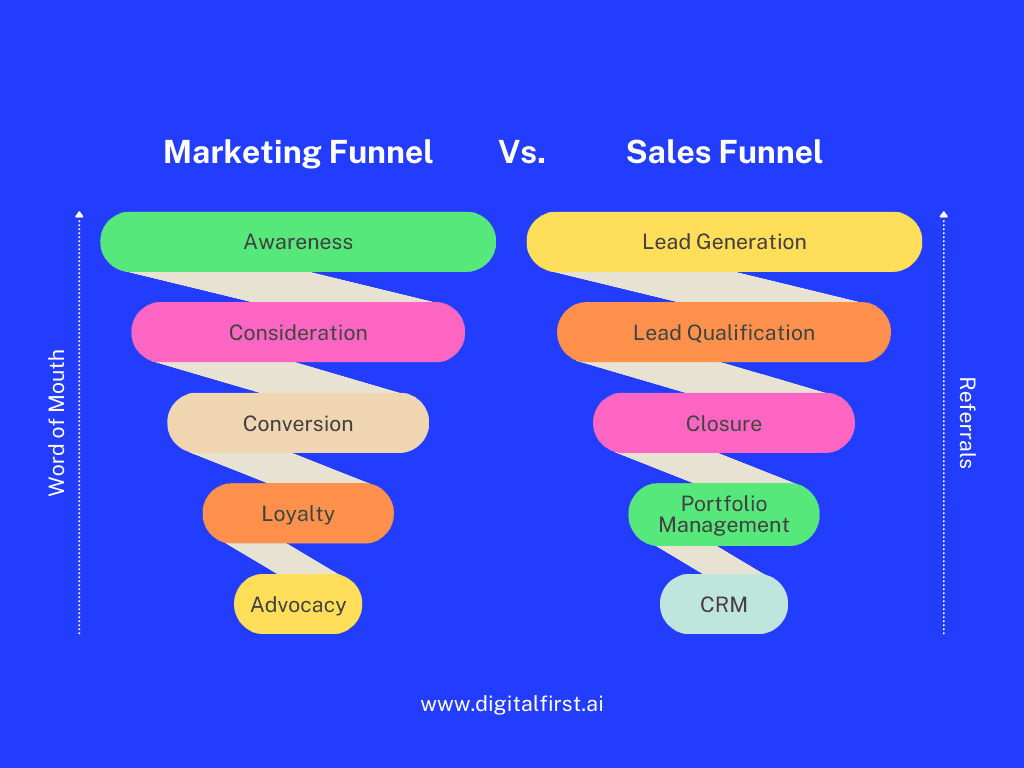
The journey from first contact to final sale involves unique strategies. Marketing funnels help you catch attention and educate potential customers. Sales funnels, on the other hand, focus on creating actual transactions. These two funnels serve different stages in the customer's journey.
For starters, the marketing funnel is about spreading the word. It's the beginning of your relationship with potential customers.
Here, lead generation is key. You want to cast a wide net to bring in as many leads as possible.
This funnel is about awareness and interest, getting people to recognize and start trusting your brand.
Moving down the funnel, lead nurturing takes the forefront.
For marketing, it's still about providing value, information, and engagement. For sales, it now gets personal.
The sales funnel is all about developing a one-on-one connection.
This stage emphasizes conversion optimization—fine-tuning how you persuade those interested leads to make a purchase.
When you reach the bottom of the funnels, the goals diverge.
The marketing funnel aims for customer acquisition, grabbing those fresh faces and turning them into customers.
Sales funnels have a slightly different endgame: finalizing the deal.
This means focusing on revenue generation and, with a successful strategy, customer retention, where you turn one-time buyers into loyal fans.
Evolution of the Funnel in the Digital Age
The digital marketing funnel has undergone a major transformation due to technology.
Pre-digital, you had straightforward methods like flyers and radio ads. Ordering online was a novelty. But today, these one-size-fits-all solutions are outdated.
In this new digital era, your journey as a consumer is more complex.
Instead of a linear path, it's like a web. You might see a targeted ad on social media or get swept up in the online buzz about a new product.
Brands reach out to you with personalized app experiences and loyalty programs to win over your loyalty.
What's causing these changes? It's the shift to non-linear customer journeys and data-driven personalization.
You're no longer just a number in the system.
Companies now focus on understanding and reaching you on a personal level. They track what you like, what you click, and how you shop.
The way brands engage with you has changed too.
With a mobile-first focus, they’re ensuring you can interact with them from anywhere at any time.
And they aren't just trying to make a sale; they're also using strategies to retain you as a customer long-term.
Types of Digital Marketing Funnel
1. B2B Marketing Funnel
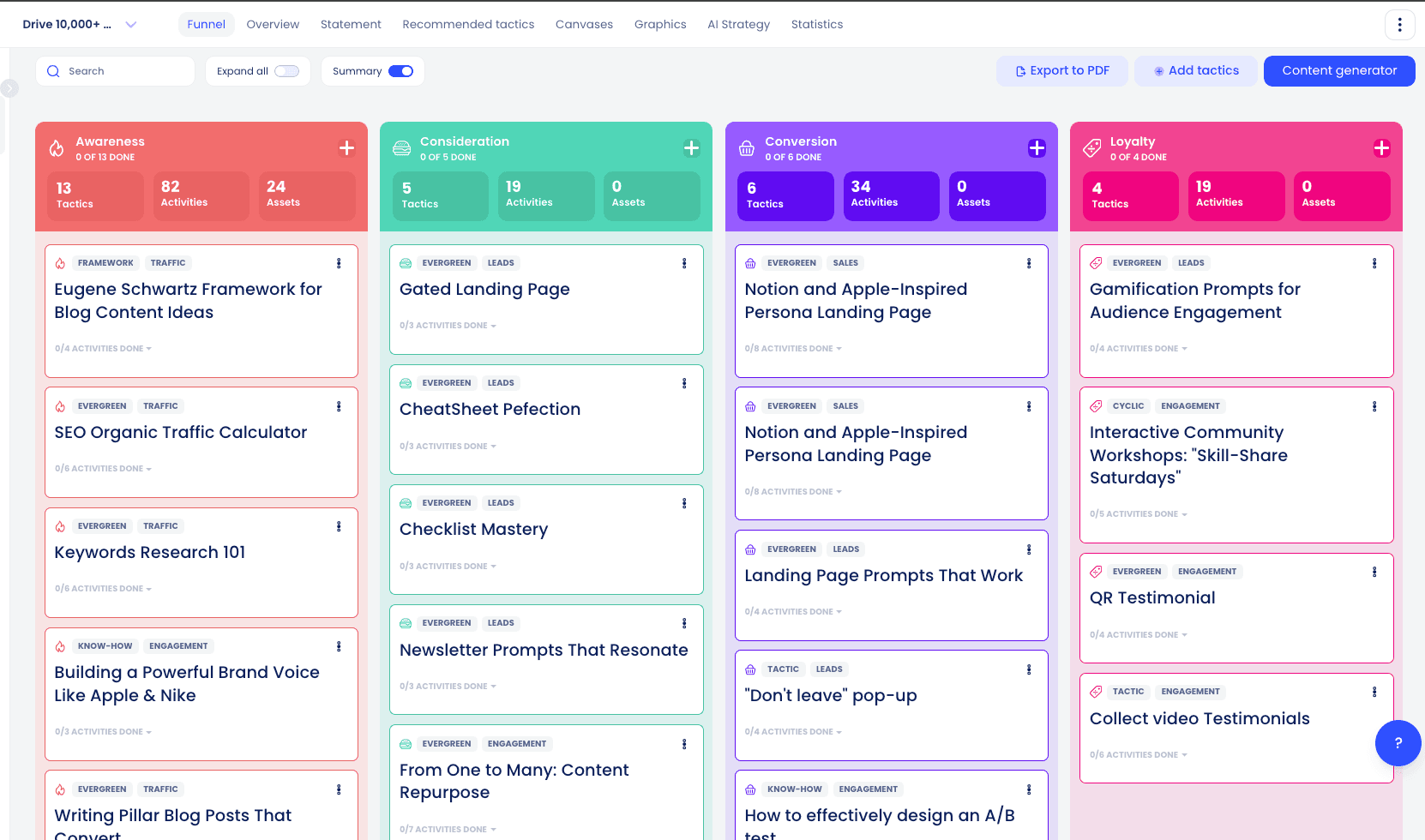
A B2B marketing funnel, also known as a B2B sales funnel, is a framework that visualizes the journey potential customers take before becoming paying clients.
It outlines the different stages they progress through, starting from initial awareness of your product or service to eventual conversion and purchase. It’s like your roadmap to transforming businesses into buyers. Picture it like a journey. You're guiding your prospects from the first "hello" to the final handshake, sealing the deal.
Attract with value: Imagine you're attracting someone. You'd share your best bits first, right? For a B2B business, that means free webinars, helpful blog posts, and social media tips. Like a magnet, you're pulling in businesses grappling with hurdles—like adapting to remote work.
Nurture the bond: You've caught their eye; now, you keep them close. Dive into case studies, let them test the waters with a free trial, or send targeted emails straight to their inbox. This warms them up, showing off solutions tailored to their pains.
Seal the deal: You're nearly there.Seal this budding relationship with live demos, compare your might against competitors, and place that cherry on top with tailored pricing. This is where you turn your leads into happy, paying customers.
Example: Zoom
Zoom entices businesses with webinars, blog tips, and hashtags on how to ace remote work.
They keep you hooked with stories of success, test runs, and emails that hit the spot.
To close the loop, Zoom wows you with live demos and pricing just right for your wallet.
Key takeaway: Just like Zoom, your content has to shine at every stage, making each step toward becoming a loyal customer smoother and irresistible.
2. B2C Marketing Funnel
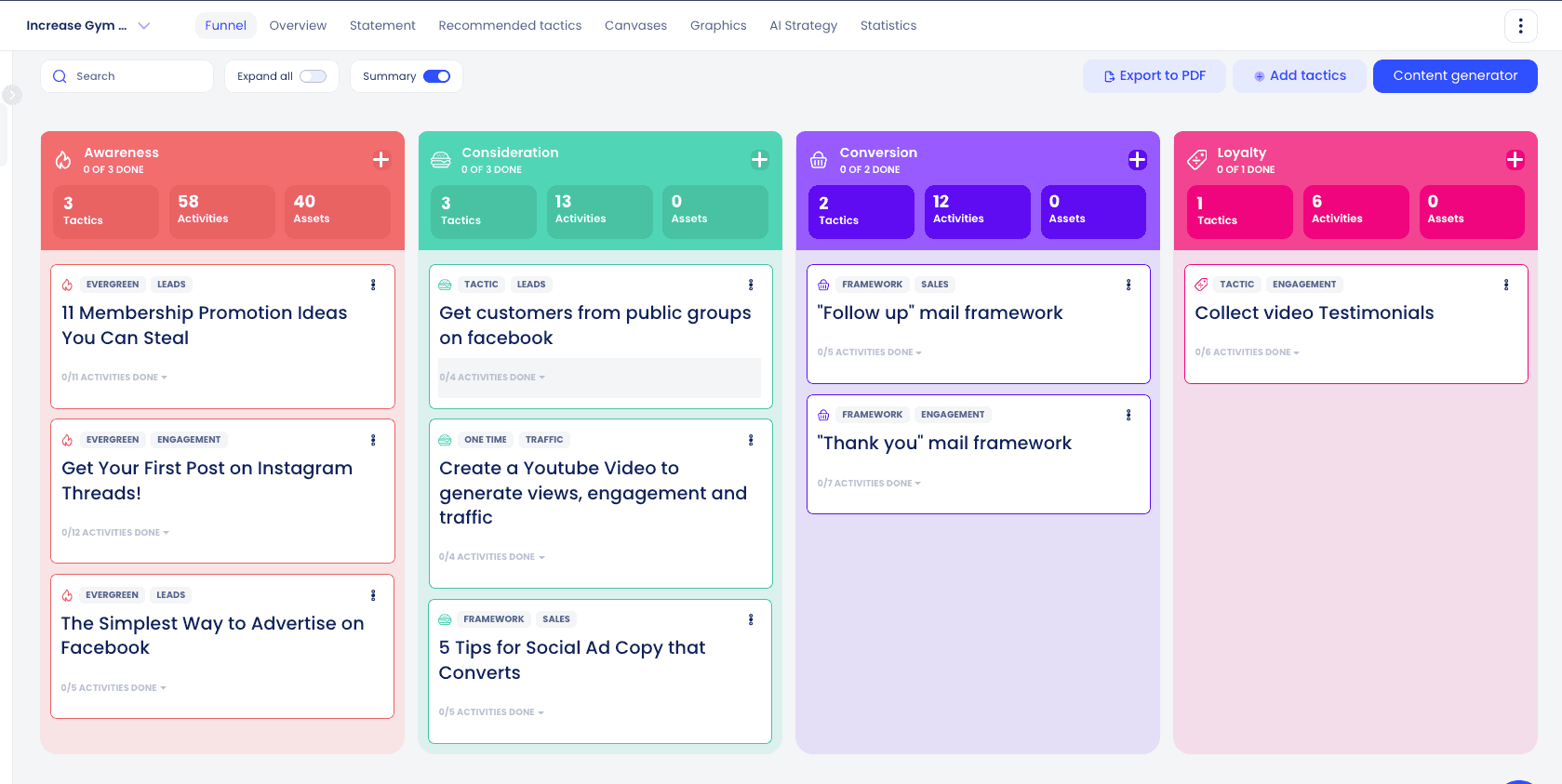
The B2C marketing funnel, also known as the consumer marketing funnel, represents the journey a potential customer takes from initial awareness of your brand to becoming a paying customer.
It's the path brands design to guide you from hearing about them to buying their products.
Top of Funnel (ToFu): When you first catch sight of those eye-popping ads on social media, you're at the funnel's wide mouth.
Sephora slays this stage with beauty tutorials and celebrity collabs that grab your attention. Think TikTok trends that you can't scroll past.
Middle of Funnel (MoFu): Next, you're moving deeper into the funnel where Sephora sends out personalized emails.
You also see those loyalty rewards or maybe even get a virtual consultation to figure out "what shade is right for me?"
Bottom of Funnel (BoFu): This is where you need the facts. Product information is easy to understand, and there are mini sizes if you want to try before you buy. Shopping is a breeze, whether you're online or in the store.
And they don’t stop there. With beauty community events and post-purchase recommendations like "if you loved this product, try this one too!", they treat you like a friend. This way, they're not just making a sale; they're creating loyal customers who keep coming back for more.
3. Linear Funnels
Linear funnels are a traditional model for representing the customer journey through different stages towards a desired outcome, usually a purchase.
They visualize a sequential and predictable path where customers encounter touchpoints designed to move them further down the funnel.
Think of them as a journey where you start at the top and end at the bottom.
Your customers become aware of your brand, consider your offerings, decide to purchase, and then, ideally, turn into repeat buyers.
4. Hourglass Funnels
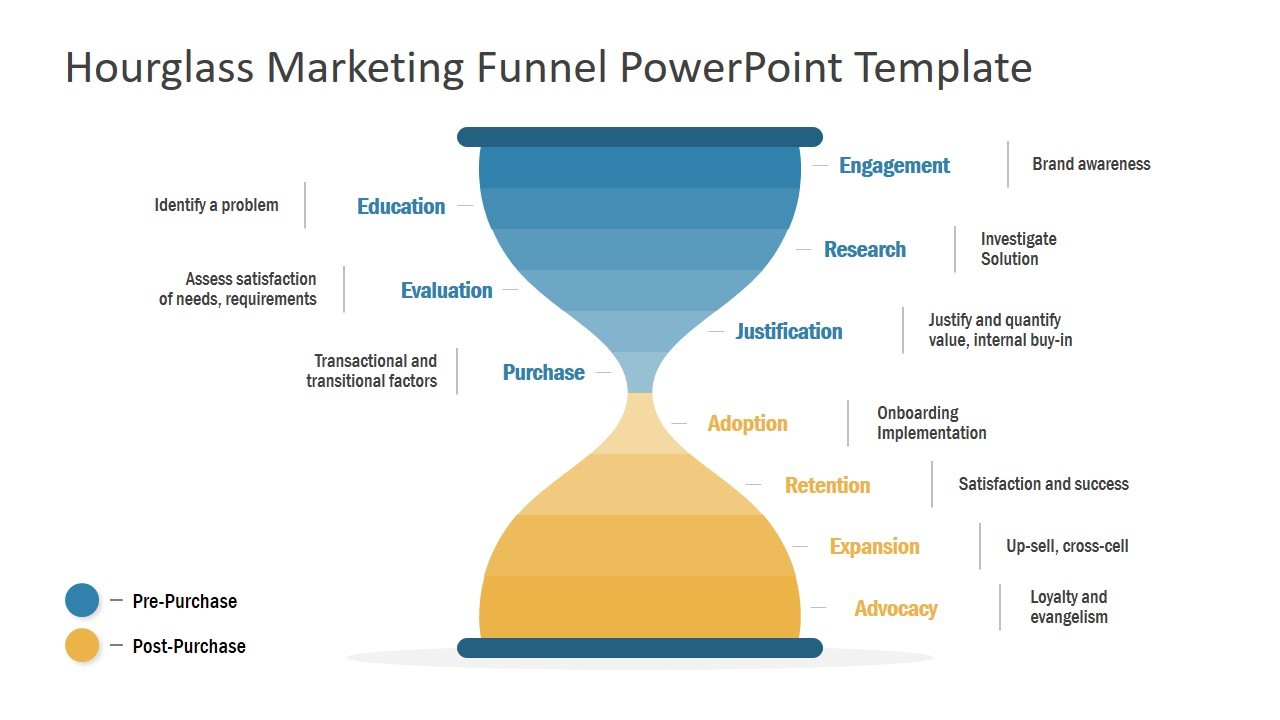
The hourglass funnel is a marketing model that visualizes the customer journey beyond the traditional sales funnel. Instead of ending at the purchase point, the hourglass expands after the purchase to represent ongoing customer engagement and potential for further transactions.
For instance, it's not just about selling a product; it's also about creating brand advocates. UMass describes the hourglass funnel as taking customer engagement further.
5. Growth Loops
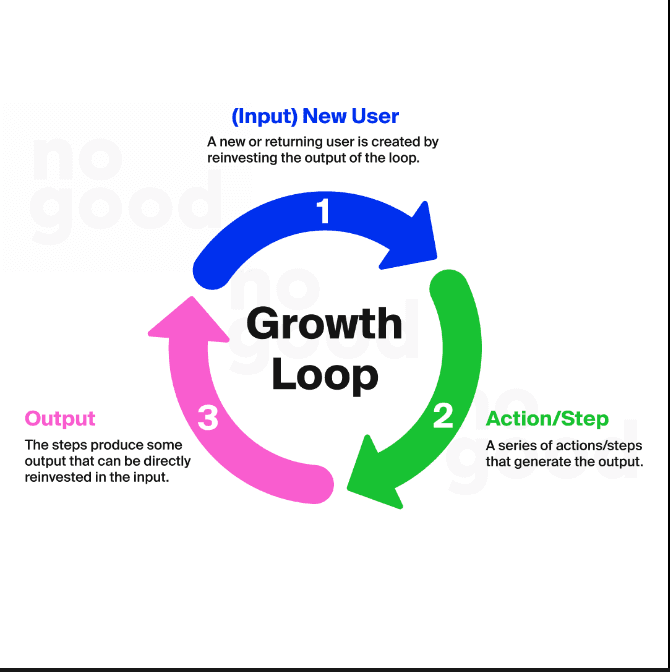
A growth loop, also known as a viral loop or feedback loop, is a system designed to generate exponential growth by reinvesting the output of one cycle into the input of the next. It's like a flywheel that spins faster and faster as it gains momentum.There's a loop where previous customers re-enter the funnel after a purchase.
They may act as repeat customers or influence new buyers. This loops back to awareness and consideration, making it a continuous cycle.
Now, think about your business. Which of these funnels feels right for you?
Remember, there's no one-size-fits-all. The type of digital marketing funnel you choose should align with your unique brand strategy.
5 Stages in Digital Marketing Funnel
Stage 1: Awareness/Discovery
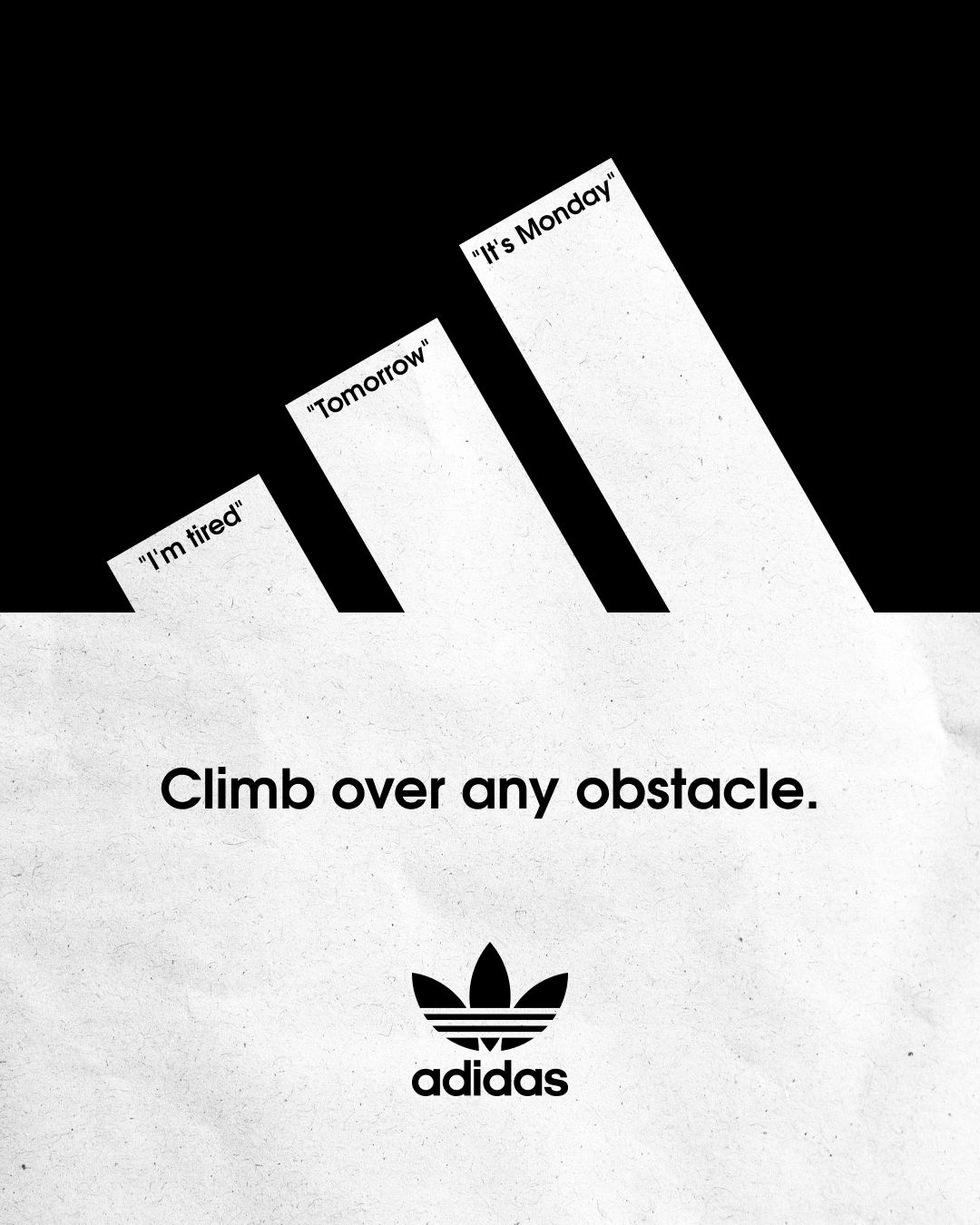
The awareness stage is the first phase of the buyer's journey. It's where potential customers become aware of your brand and its offerings, but they haven't yet identified themselves as having a specific need or problem that your product or service can solve.When you start a journey, the first step is always finding the right path. In digital marketing, this path begins with the awareness or discovery phase.
Imagine someone just whispering your name in a crowded room—that's awareness. You want people to turn their heads and look your way, to notice your brand among the sea of others.
Think about what grabs your attention on the internet: catchy headlines, bright images, or maybe a funny video?
Well, your future customers are just like you. They're scrolling through their feeds, looking for something that stands out. Use eye-catching content to spark their interest.
You've probably seen ads pop up while you're online, or perhaps a blog post shared by a friend. Those are tools businesses use to get you to discover them.
It's not just ads and posts though. You can discover things through search engines, social media chatter, or even an eBook that solves a problem you've been having.
Now don’t just cast a wide net and hope for the best. Get to know your audience.
What are they interested in? What do they need? By understanding this, you can create messages that speak directly to them.
Engage with them on social media, educate them with informative content, and make sure your brand is where they are, ready to greet them like an old friend.
Remember, the awareness/discovery stage is about making connections. Make your brand memorable and relatable, so when the moment comes to choose, they'll think of you first.
Stage 2: Interest/Consideration
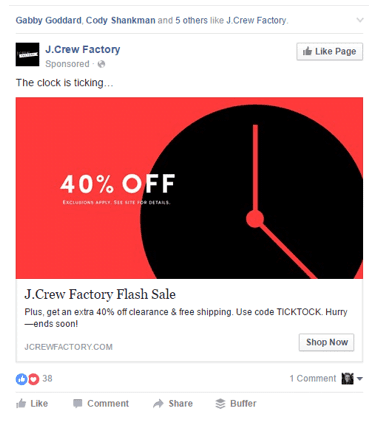
The consideration/interest stage, also sometimes called the evaluation stage, sits towards the middle of the funnel journey. It's where potential customers become aware of your product or service and start actively considering it as a solution to their needs.
At this stage, you're no longer browsing; you're interested. Think of this as relationship-building time. You're ready to see what suits you best, and we're here to guide that journey with engaging content.
What works here? Let's break it down:
Educate: You want details, not just a sales pitch. Reading about how others solved problems similar to yours can help. Look for case studies and product comparisons; they're gold when making smart choices.
Experience: Ever tried a product without buying it? Interactive quizzes or product demos let you 'test-drive' solutions. This hands-on approach deepens your understanding without any strings attached.
Remember, it's all about finding the right fit for you. We offer valuable insights so you can make informed decisions confidently. Keep exploring and evaluating, because what you discover here sets the stage for your next big move – choosing the best solution for your needs.
Your choice matters, and we're here to provide the clarity you need. Reach out, learn more, and get closer to that decision that feels just right.
Stage 3: Decision/Appraisal
The decision stage is the final phase where potential customers move from considering a product or service to actually making a purchase decision.
When you reach the decision stage of the digital marketing funnel, it's crucial to address the concerns that are top of mind for your potential customers.
It's the point where they're comparing options, so it's your chance to shine and highlight what sets your brand apart. Think about unique benefits or features that make your product or service the ideal choice.
Demonstrations and trials can make a big difference here. Consider offering a free trial or consultation to give a taste of what you have to offer.
When customers can experience your product firsthand, they're more likely to feel confident about their purchase. Make it as easy and risk-free as possible for them to say, "Yes, this is for me!"
To make your offers even more compelling, personalize them. Use tools that tailor special deals and retarget potential customers with the perfect promotions that reflect their interests and behaviors.
Bold retargeting strategies keep you at the forefront of their thoughts.
Stage 4: Action/Conversion
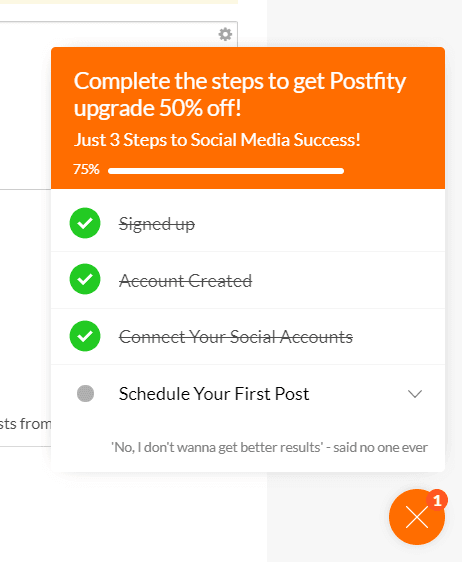
The action stage (also known as the decision stage or conversion stage is where prospective customers are most likely to convert and take a desired action, such as making a purchase, subscribing to a service, or signing up for a free trial.
It’s all about making it happen. This is when your visitors decide to take the leap and turn into customers.
Guide your users: Make sure your calls-to-action (CTAs) are impossible to miss. Use clear, action-oriented language.
Something like "Buy Now" or "Get Started Today" can work wonders. You can up the ante with limited-time offers; a ticking clock can persuade fence-sitters to act fast.
Smooth sailing checkout: If you're selling something, a secure and fuss-free checkout is crucial. Keep it simple. Make sure you're not asking for too much information and scare them away – just gather what you need.
A/B testing is your friend: Are you wondering if your 'Buy One, Get One Free' deal is better than a '20% Off' offer?
Use A/B testing tools to find out. These tools let you compare different versions of your page to see what resonates best with your audience.
Keep Optimizing: Always tweak and improve.
The digital world moves fast, and what worked today might not work tomorrow.
Stay on top of your game by using conversion optimization strategies, and you'll see more of those 'just browsing' visitors turn into loyal customers.
Try different techniques and tools; what’s important is that you find what works best for you and your audience.
Stage 5: Retention/Customer Relationship

The retention stage in the digital marketing funnel is the final phase after awareness, consideration, and conversion. It focuses on turning one-time customers into loyal brand advocates.It's about creating value that keeps them coming back.
Building a strong bond with your customers doesn't stop after they make a purchase. It's about creating value that keeps them coming back.
Email marketing automation is your secret weapon. It's like having a robot-friend that sends timely, personalized messages to your customers without you lifting a finger.
Exclusive content will make your customers feel special. Think of it as a VIP pass—access to cool stuff other folks don't get.
Engage with your community. Answer questions, share tips, or just chat. It's like tending a garden — water it with attention, and it will bloom.
Listen to what they have to say. Use surveys or feedback tools; it shows you care and can help you improve.
7 Steps to Build an Effective Digital Marketing Funnel
Step 1: Define Your Target Audience
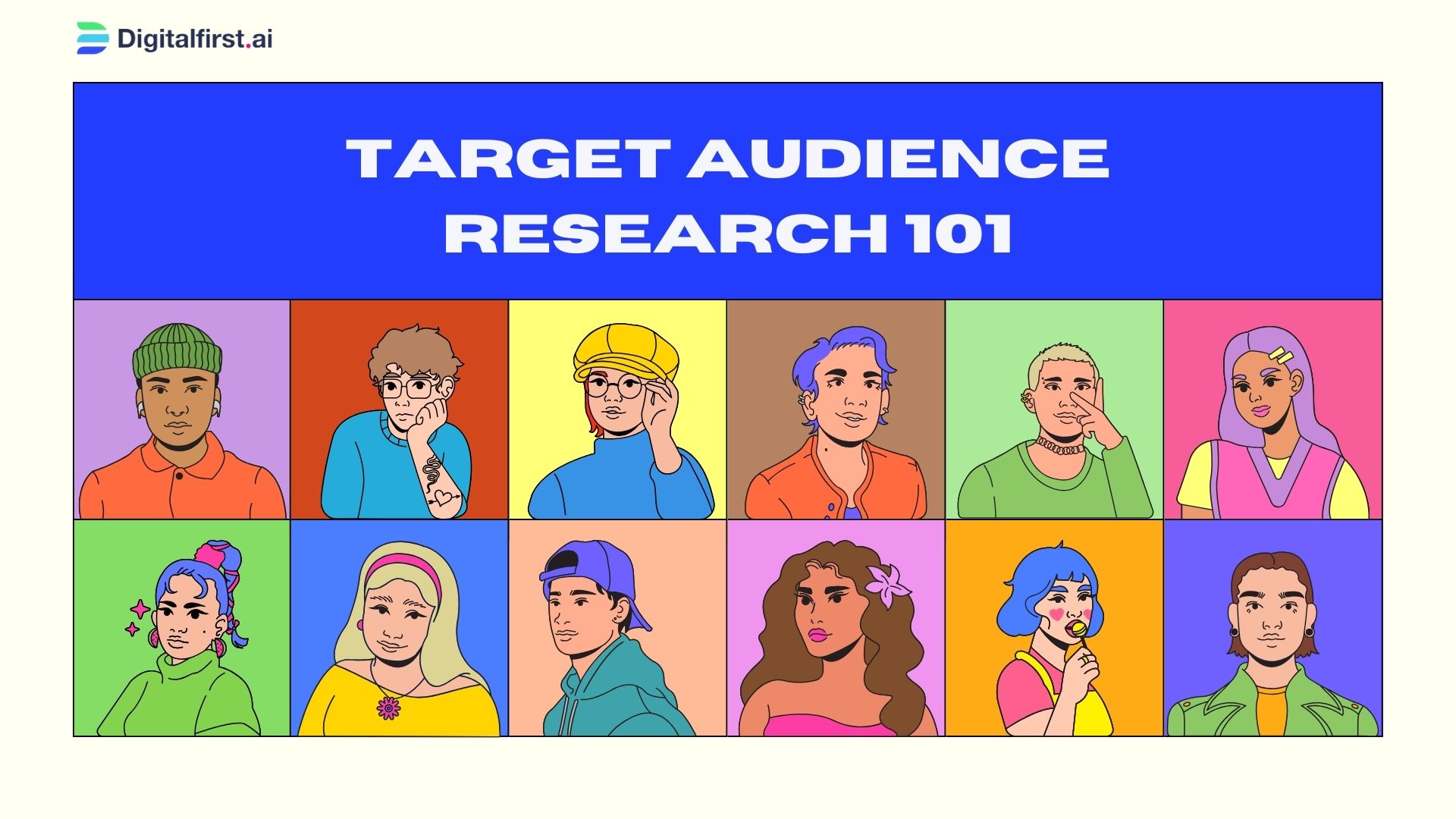
A target audience is a specific group of people who are most likely to be interested in a product, service, message, or idea. It's the group that an advertiser, writer, or speaker wants to reach with their communication.
Getting to know who you're talking to is key. Start by peeking into the world of your audience using the insights gleaned from your website and social media.
Look closely at who they are—their age ranges, interests, and what keeps them clicking and scrolling.
Now, picture your perfect customer. You're crafting a buyer's persona.
Think of it as a blueprint of the folks most likely to love what you sell. This persona should reflect their ambitions and the hurdles they face; it's a snapshot of their world, helping you tailor your messages just right.
Demographics: Brush up on the basics—age, gender, income, job. Simple, right? But there's more. What makes them tick? What are their hobbies? Keep it real and relatable.
By delving into your audience, you're setting the scene. Each detail helps to create content that resonates, making them feel understood and ready to take the next step with you. Remember, speak to them like they're right there with you—it's not just data, it's what drives your digital success.
Step 2: Set Your Marketing Goals
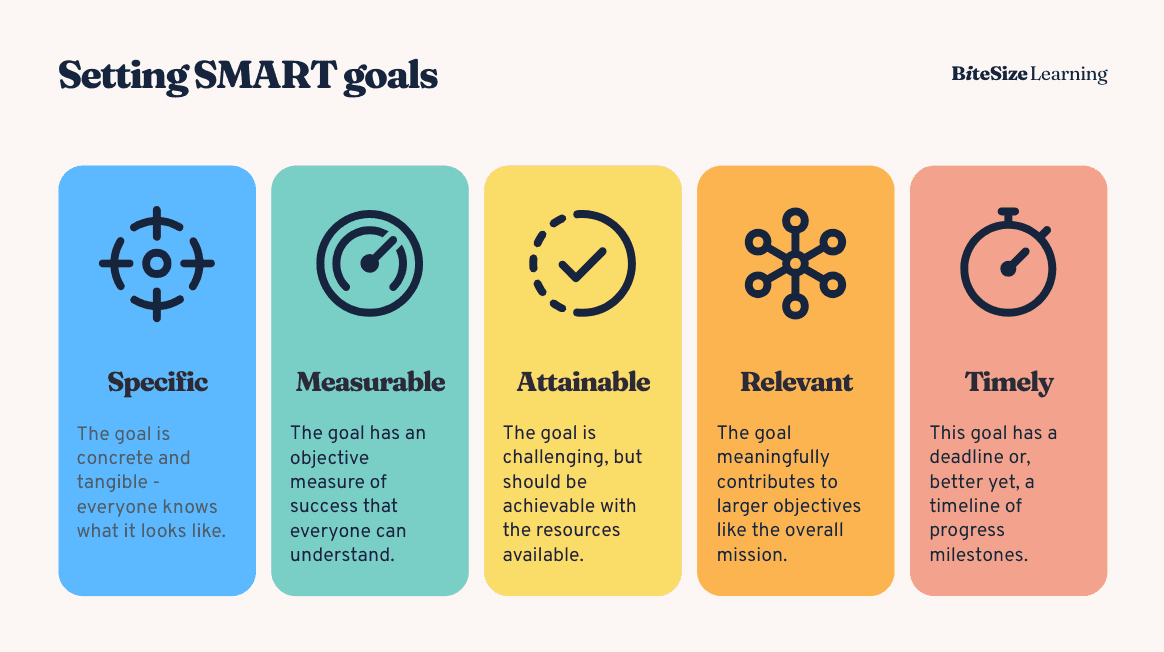
SMART goals are a recipe for success: Specific, Measurable, Achievable, Relevant, and Time-bound.
They help you:
Focus & motivate: Clear goals keep you on track and pumped.
Be accountable: Track progress and celebrate milestones.
Boost efficiency: Know what to do and when, managing time wisely.
When shaping your marketing campaign, it's crucial to pinpoint exactly what you're aiming to accomplish.
Is your focus on spreading the word about your brand, capturing interest with leads, or driving your sales numbers upward?
Establishing clear objectives sets the foundation for the rest of your funnel.
Make your goals SMART, which means each target should tick off these boxes:
Specific: Clearly define what you want to achieve.
Measurable: Determine how you will track progress and success.
Achievable: Your goals should stretch you slightly so you feel challenged, but not so far that you become frustrated or disheartened.
Relevant: Ensure your aims are pertinent to your business.
Time-bound: Set deadlines to keep yourself accountable.
Focus on one or two key objectives to start with.
You could aspire to increase your newsletter sign-ups by 20% over the next three months, or perhaps look to boost product sales by 15% before the quarter ends.
Remember to keep targets realistic; setting the bar too high can be just as counterproductive as setting it too low.
Your goals should motivate and guide you, not push you into overdrive to the point of burnout.
Utilize tools and metrics like website traffic analysis, conversion rates, and engagement levels to monitor your progress and adjust your strategy as needed.
Setting these goals isn't just about having an endpoint in sight. It’s about crafting a roadmap for your business's growth and ensuring you stay on the right path with every marketing activity you undertake.
Step 3: Develop Content for Each Stage
Top of the Funnel (ToFu): Awareness
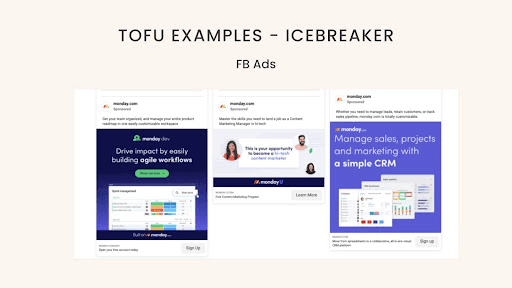
At this point, your audience is looking for answers and resources. Craft content that addresses broad questions related to your industry.
Blog posts and social media updates are perfect for getting their attention. Make it informative and easy to understand, so they can recognize their needs.
Middle of the Funnel (MoFu): Consideration
Now they're considering options. Here, comparison guides and webinars can provide more in-depth knowledge.
It's about showing expertise and building trust, so they view you as a solution to their problem.
Bottom of the Funnel (BoFu): Decision
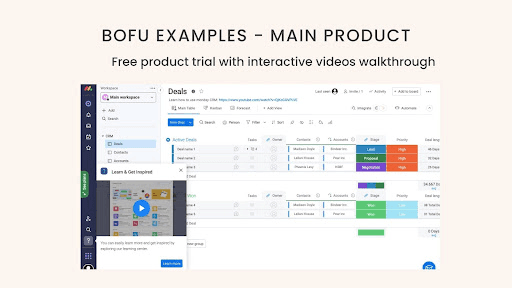
Close to the finish line, your audience needs that final push. Use case studies and free trials to prove your product's value.
Keep it straightforward—show how your solution is the best choice for them.
Step 4: Design Your Landing Pages
When crafting your landing pages, think of them as the key stops in your customer's journey. These are the pages where your audience lands after clicking on an ad, a link in an email, or a social media post.
Your goal here is to make each page compelling enough to keep visitors moving forward.
Essentials for High-Converting Pages:
Clear CTAs: Every page should have a straightforward call to action, nudging your visitors toward the next phase.
Focused Content: Keep page content relevant to the funnel stage, without any unnecessary distractions.
Consistent Branding: Your landing pages should mirror the look and feel of your brand for a cohesive experience.
Remember, the design should be clean, with a user-friendly layout that guides your visitors exactly where you want them to go.
Use bold headings, italicized key terms, and lists to split information into digestible bites.
Awareness Stage: Use educational content that addresses your audience's problem.
Consideration Stage: Offer comparisons or case studies that showcase your solution's value.
Decision Stage: Present clear benefits and testimonials to nudge them toward a purchase.
Think about the journey you're guiding your customers on. With each landing page, you're one step closer to converting a visitor into a loyal customer. Keep your messages aligned with your brand voice and ensure each page speaks directly to your audience's needs.
Step 5: Promote Your Funnel
To get eyes on your funnel, tap into search engine optimization (SEO). This means choosing the right keywords and creating valuable content that ranks high on search engine results.
Consider this your digital signpost that guides people to your doorstep.
Next, look at pay-per-click (PPC) advertising. You only pay when someone clicks, making it a cost-effective way to attract visitors.
You can target those who are most likely to be interested in what you're offering, ensuring your money is well spent.
Don't forget social media marketing. It's like throwing a digital party where your funnel is the guest of honor.
Use engaging posts and ads to draw people in. With the right strategy, your social presence can become a major traffic driver.
Finally, email marketing remains a powerful tool. Start conversations with tailored messages that encourage clicks back to your funnel.
Remember, these channels work best when they work together.
Think of them as a team, each with its own strengths, pulling customers towards your funnel. Now go get your name out there.
Step 6: Track and Analyze Your Results
To make your digital marketing funnel work, you need to keep an eye on key metrics.
Watching your website traffic, checking if people click your ads, and noticing how many become leads are like pieces in a puzzle. They show you what's working.
Think of your funnel as an experiment. Try different ideas, like changing the words on your landing page, and see what happens.
It's all about testing. A/B testing, for instance, is when you change one thing at a time.
Maybe you have two headlines, and you want to know which one gets more clicks. So, you show both to different people and track the results.
Here's a simple list to help you track better:
Website Visits: Are more people coming to your site?
Conversion Rates: Are visitors doing what you hope, like signing up or buying?
Content Engagement: Are they reading your blogs or watching your videos all the way through?
It's like keeping score in a game. The better your numbers, the better your funnel's working.
Plus, by trying new things, you learn more about what your audience likes. That can lead to even better ideas for your funnel.
Remember, tracking isn't just a one-time thing. It's a regular part of growing your business. So, keep your eyes on the prize and tweak your strategy as you go.
Some useful resources:
Step 7: Continuously Refine and Iterate
When you're in the thick of your digital marketing efforts, it’s crucial to remember that marketing success doesn’t happen overnight.
Just like how you wouldn't plant a seed and expect it to become a tree the next day, you can't expect your marketing funnel to be perfect from the get-go. That's why is all about making continual improvements.
Review Your Data
Track metrics like conversion rates and bounce rates.
Identify trends: What's working? What's not?
Imagine your funnel as a work in progress. By keeping an eye on your metrics regularly, you'll get a clear picture of where your prospects drop off and which parts of the funnel are doing great.
Test Changes
A/B testing is your best buddy here.
Try out different headlines, images, and CTAs.
Make one change at a time for accuracy.
Think of this as a scientific experiment for your business. You have hypotheses on what might work better – now test them.
Maybe a more casual tone in your emails leads to higher open rates, or perhaps a different color button gets more clicks.
Adapt Based on Feedback
Gather feedback through surveys or user testing.
Be open to criticism, and use it to enhance the user experience.
Finally, remember that your users are your ultimate guides. Their feedback is the compass that'll point you in the right direction.
Changes may seem small, but over time, they can make a huge difference. Your willingness to iterate is what will put you ahead of the pack. Keep tweaking, testing, and learning – that's how you'll perfect your digital marketing funnel.
Key Metrics to Track for Success in the Digital Marketing Funnel
Impressions
The number of times your ad is shown to a user.
Monitor impressions to ensure your ad is being seen by your target audience.
If impressions are low, consider adjusting your targeting or ad placement for higher visibility.
Click-through rate (CTR)
The percentage of users who click on your ad after seeing it.
Improve your ad's copy and visuals to increase CTR.
Test different versions of your ad to see which performs best.
Formula: (Clicks / Impressions) x 100.
Conversion rate (CR)
The percentage of users who complete a desired action (such as making a purchase or filling out a form) after clicking on your ad.
Optimize your landing page for higher conversion rates
Test different landing page designs and copy to see what resonates with your audience.
Formula: (Conversions / Clicks) x 100.
Cost per click (CPC)
The amount you pay for each click on your ad.
Monitor CPC to ensure you're getting the most out of your ad spend.
Consider adjusting your targeting or ad placement to reduce CPC if it's too high.
Formula: Cost / Clicks.
Return on ad spend (ROAS)
The amount of revenue you generate for every dollar spent on advertising. Formula: Revenue / Ad Spend.
Monitor ROAS closely to ensure you're getting a positive return on investment.
Adjust your ad spend or targeting if ROAS is too low
Formula: Revenue / Ad Spend
Customer acquisition cost (CAC)
The cost of acquiring a new customer.
Monitor CAC to ensure you're acquiring customers at a reasonable cost.
Try to reduce CAC by improving your targeting or ad performance.
Formula: Total Acquisition Cost / Total New Customers.
Lifetime value (LTV)
The total revenue a customer will generate over the course of their relationship with your business.
Increase LTV by offering upsells, cross-sells, and bundles to encourage repeat purchases.
Provide excellent customer service to retain customers.
Formula: Average Order Value x Number of Repeat Purchases x Average Customer Lifespan.
Churn rate
The percentage of customers who stop doing business with your company during a given period.
Monitor churn rate to identify reasons why customers are leaving.
Use customer feedback and surveys to improve the customer experience and reduce churn rate.
Formula: Number of customers lost / Total number of customers.
Average order value (AOV)
The average amount spent per order.
Increase AOV by offering upsells, cross-sells, and bundles to encourage customers to spend more.
Formula: Total Revenue / Total number of orders.
Modernizing Your Approach
To keep up in the fast-paced world of online marketing, your digital marketing funnel needs a fresh look.
Instead of the old straight path, think of your customer's journey as a web of choices and touchpoints. They might visit your site, check out social media, or watch a video—each step is crucial.
First Things First: Map out the journey your customers take now. What's working? What isn't?
You may find Digital First AI marketing funnel management and customer journey canvas useful..
Make It Personal: Tailor your content to answer your customer's questions at each stage.
If they're just getting to know you, offer helpful info. Ready to buy? Give them the nudge they need.
Awareness: Craft content that shines and grabs attention.
Consideration: Show them you've got the perfect answer to their needs.
Decision: Sweeten the deal with a great offer they can't refuse.
Test & Learn: Which emails get opened? What ads get clicked? Use tools from Hotjar to measure and improve.
By tweaking these parts of your funnel, you'll connect with your customers in a way that feels right.
It's like fixing up a car; you're tuning the engine for a smoother ride and a faster race to the finish line!
Use of Modern AI Tools and Workflows
Digital First AI
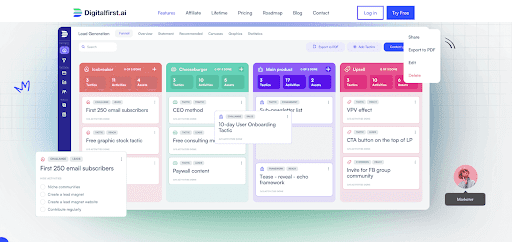
Digital First AI is an AI based marketing platform that has been used by over 15k+ marketers and entrepreneurs. It helps you create digital marketing funnels that drive results by providing a custom-made marketing strategy with AI, access to 1000+ battle-proven marketing tactics, defining your customer journey with the tactical flow, team collaboration, and an AI copywriter and design generator.
All in one place, making it easier to manage your funnel, optimize for maximum conversion, and create high-quality content that captivates your audience.
Hotjar
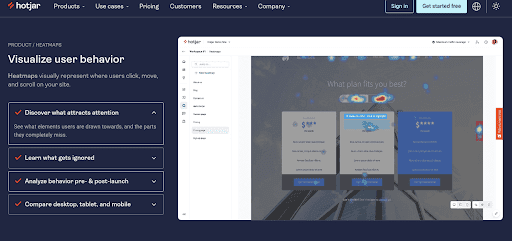
Hotjar is a powerful tool for building and optimizing your funnel. It allows you to track user behavior on your website, including where users click, how far they scroll, and how long they spend on each page.
This information can help you identify areas of your funnel that need improvement, such as pages with high bounce rates or low conversion rates. Hotjar also allows you to conduct user surveys and collect feedback from your audience, which can help you make data-driven decisions about your marketing strategy.
Unbounce
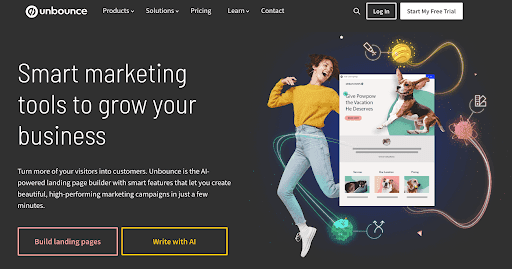
Unbounce is a landing page builder that allows you to create high-converting landing pages for your funnel. It offers a drag-and-drop interface that makes it easy to design and test landing pages without any coding knowledge.
Unbounce also offers A/B testing and analytics tools that allow you to optimize your landing pages for maximum conversion rates. By using Unbounce to create high-converting landing pages, you can improve your overall funnel performance and drive more leads and sales.
Zapier
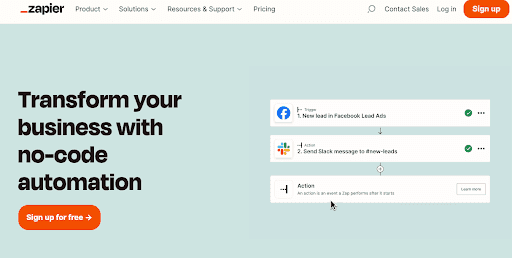
Zapier is a powerful marketing automation tool that allows you to connect different apps and tools in your funnel. For example, you can use Zapier to automatically send leads from your landing pages to your email marketing tool, or to trigger a follow-up email when a lead completes a certain action on your website. By automating different steps in your funnel, you can save time and improve your overall efficiency.
GetResponse
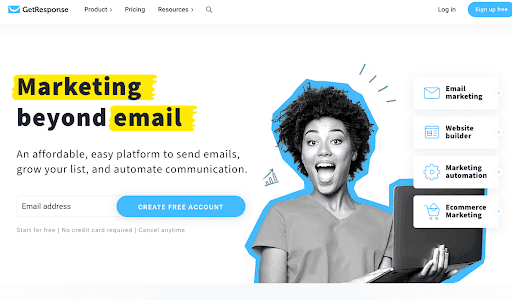
GetResponse is an email marketing tool that allows you to automate your email campaigns and nurture leads through your marketing funnel. It offers a drag-and-drop email builder that makes it easy to create beautiful and engaging emails, as well as automation workflows that allow you to send targeted messages based on user behavior. By using GetResponse to automate your email campaigns, you can keep leads engaged and move them through your funnel toward conversion.
Google Analytics
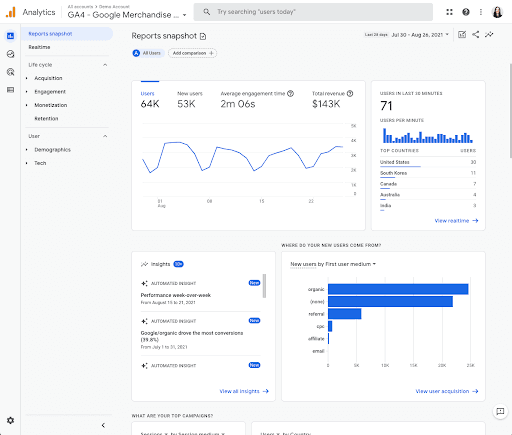
Google Analytics is a powerful analytics tool that allows you to track user behavior on your website and measure the performance of your marketing funnel. It provides insights into metrics such as traffic sources, bounce rates, and conversion rates, which can help you identify areas of your funnel that need improvement.
By using Google Analytics to track your funnel performance, you can make data-driven decisions about your marketing strategy and optimize your funnel for maximum conversion rates.
Micro-Moments
Imagine you’re on your phone, pausing mid-scroll because you've got a sudden urge to buy, learn, or discover something. This is what we call a micro-moment; it's when your intent becomes action through a mobile search.
These moments are golden opportunities for brands to serve personalized content that meets your needs right then and there.
In micro-moments, user intent is king. You want quick answers, and brands that recognize these intents can deliver hyper-targeted messages.
These are not broad, one-size-fits-all ads but crafted messages meant to feel personal, like they're talking directly to you.
Your experience becomes smoother because the content aligns with what you’re searching for in real-time.
With most searches now happening on mobile devices, it's crucial for content creators to think about your journey.
Every swipe or click you make is a chance for a brand to introduce a product or offer that feels custom-made for you.
It's like walking into a store where everything is arranged just for your visit.
So, keep an eye out for when companies get it right; when an ad or a suggestion online seems tailored specifically to you. It's not a coincidence—it's the power of micro-moments, where brands use understanding and technology to offer a helping hand just when you need it.
Marketing Automation
Marketing Automation lets you streamline your digital marketing tasks, making sure that you can focus on other important jobs. Think of it like having a super-efficient assistant who never sleeps!
Email Campaigns: Set up automated emails to keep your customers informed and engaged. They're like friendly reminders that pop up in their inbox at just the right time.
Lead Nurturing Workflows: With automation, leads don't get lost. They're nurtured until they're ready to say "yes" to your product. It's like feeding and watering a plant until it blooms.
Social Media Scheduling: Schedule posts ahead of time to keep your social media game strong without being glued to your phone or computer 24/7.
Personalized Content Delivery: Imagine delivering content that speaks directly to your customer's needs. Automation tools can help tailor your message so it hits home every time.
Remember, to keep things running smoothly, check your automation systems regularly. After all, you want to make sure your digital presence is always fresh and relevant.
Personalization
Personalizing your digital marketing funnel can be a game changer. User behavior tells you what visitors do on your site. This includes which pages they linger on and what they ignore.
By tracking these actions, you're better equipped to make their experience feel like it's tailored just for them.
Demographics and preferences play a huge part, too. Imagine you know a user's age or interests.
You can craft targeted messaging that speaks their language. For example, if they love tech gadgets, show them content about the latest devices.
Why not level up with dynamic content? This changes based on who's looking.
Say a visitor has looked at running shoes before. Next time they drop by, they could see a banner showcasing the newest sneakers. It's like you’re reading their mind!
Remember, when your message resonates, your audience listens. They’re more likely to move down the funnel and take action. Keep it personal and watch your connections with customers grow.
Omnichannel Marketing
Imagine shopping online with such ease that no matter where you do it—be it on a phone, computer, or in a store—it feels flawlessly consistent. That's the essence of omnichannel marketing; it's about creating a cohesive experience across all platforms.
Your customers can switch from one to another and still feel like they're in the same conversation with your brand.
Start by ensuring your campaign's messaging is consistent. Whether your customer sees an ad on social media or receives an email, the message should be unmistakable and familiar.
This builds trust and reinforces your brand's story.
But it's not just about the message; it's also about making all your channels work together.
So, when someone browses your products on their phone, their choices should seamlessly carry over when they switch to a laptop.
Next, let's talk about data integration. By connecting your marketing channels, you'll see a clearer picture of customer behavior and preferences.
This way, you can personalize their experience, recommend products they'll love, and even anticipate needs they haven't expressed yet.
Finally, remember that your customers are looking for help at all times.
Providing 24/7 assistance is a move towards making your presence consistent and helpful, regardless of when or where your customers are reaching out.
Whether through chatbots or a support team, being available at all times can drastically improve conversion rates.
Keep it simple, direct, and reliable, and watch as the barriers between channels disappear for your customers.
Real-world Examples of Digital Marketing Funnel Implementation
Harry's
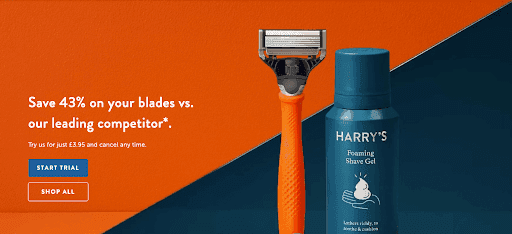
Harry's is a men's grooming brand that sells razors, shaving cream, and other grooming products. Their ecommerce marketing strategies are designed to drive traffic to their website, convert visitors into customers, and nurture them into repeat buyers.
Strategies
Targeted advertising campaigns to reach potential customers.
User-friendly website and landing pages with clear calls-to-action.
Offered a free trial of their products to encourage sign-ups.
Personalized email campaigns to nurture leads and drive repeat purchases.
HubSpot
HubSpot is a marketing and sales software company that provides tools for inbound marketing, social media marketing, and customer relationship management. Their digital marketing funnel is designed to attract potential customers, convert them into leads, and nurture them into paying customers.
Strategies
Educational content marketing to attract potential customers.
Landing pages to capture leads and offer free trials of their software.
Personalized email campaigns to nurture leads and drive conversions.
Upselling and cross-selling strategies to encourage customers to upgrade their subscriptions.
Airbnb
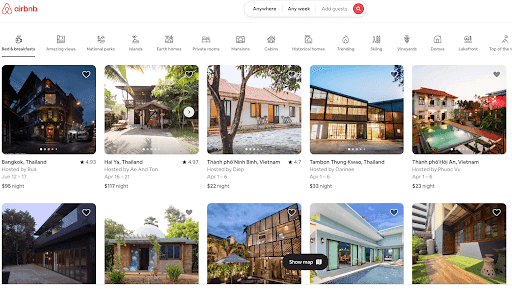
Airbnb is a global online marketplace for short-term lodging and vacation rentals. Their digital marketing funnel is designed to attract potential hosts and guests, convert them into platform users, and retain them as loyal customers.
Strategies
Targeted advertising campaigns to reach potential hosts and guests.
Landing pages to capture leads and offer incentives for signing up.
Personalized email campaigns to nurture leads and drive conversions.
Referral programs to encourage existing users to refer new hosts and guests to the platform.
Build Marketing Workflows That Work for you

No credit card needed. Instant access. Try now for free
Digital First AI empowers marketers with AI-driven tools to centralize data, build personalized strategies, and execute campaigns seamlessly.
Generate content, automate workflows, and outpace competitors—all in one secure platform.
AI-Powered Data Room: Centralize and analyze unstructured data for actionable insights.
AI Strategy Canvases: Generate 26+ strategic canvases for tailored campaigns.
Advanced Research Tools: Conduct real-time market and competitor research.
AI Content & Visuals: Create high-quality copy and visuals with leading AI models.
Drag-and-Drop Workflow Builder: Design and automate custom workflows effortlessly.
Pre-Built Templates: Jumpstart campaigns with customizable templates.
Over 15,000 marketers and entrepreneurs from around the world are already reaping the benefits. Enjoy a free trial without any commitments!
Before You Go
Phew! We just tackled the digital marketing funnel, and let's be honest, it can feel like a maze sometimes. But fear not, marketing friend! We've boiled down the essentials and sprinkled in some actionable tips to help you navigate it like a pro.
Final Takeaways:
Forget the old sales funnel. The digital funnel is all about guiding users on a journey, nurturing relationships, and converting them into loyal fans (AKA repeat customers!).
There's no one-size-fits-all funnel. B2B vs B2C? Different goals, different approaches.
It's a 5-stage adventure: Awareness, Interest, Decision, Action, and Retention. Keep your audience engaged every step of the way.
Building your funnel ain't sorcery. We've mapped out 7 easy steps, from defining your target audience to tracking your results (because data is your BFF).

